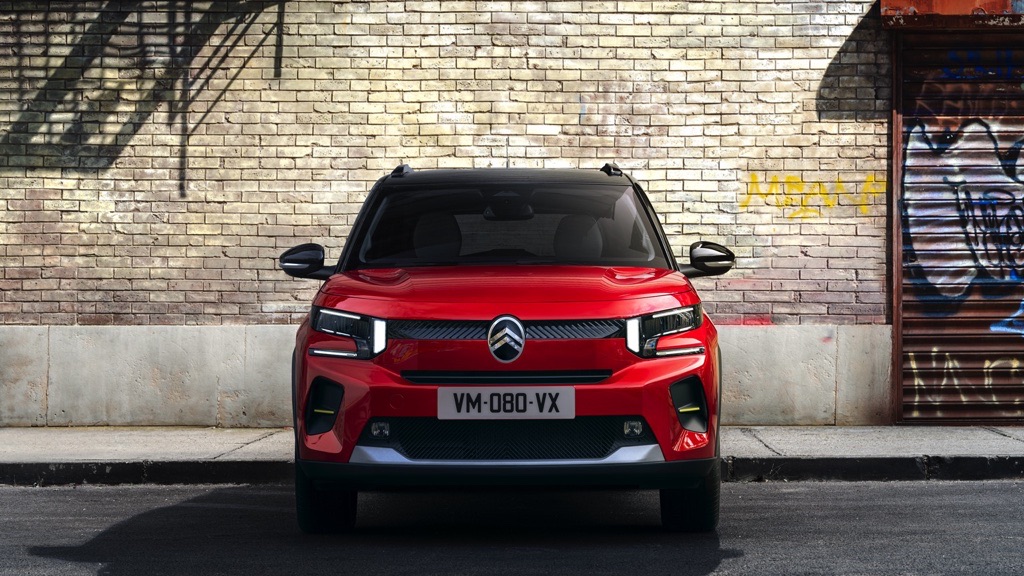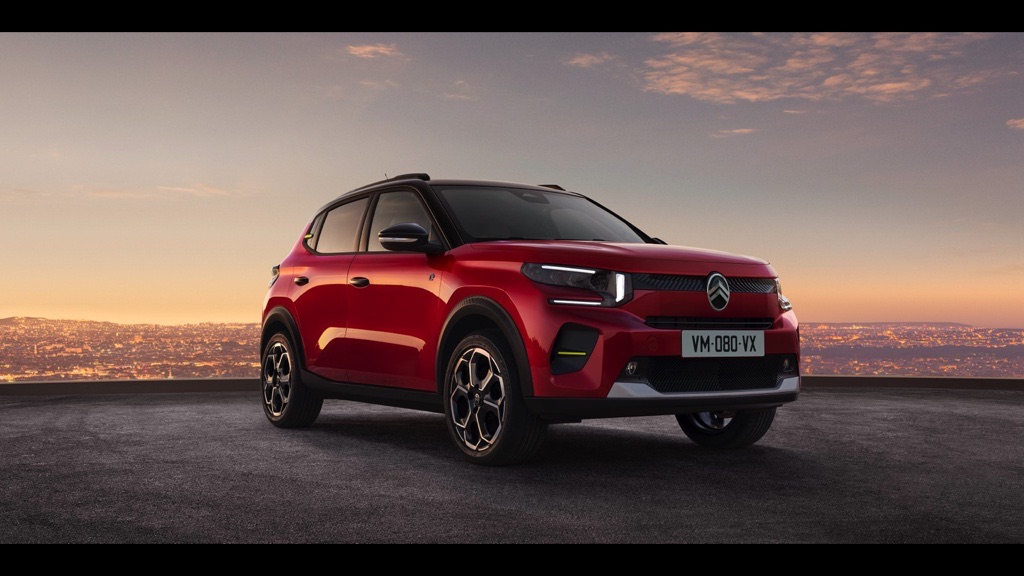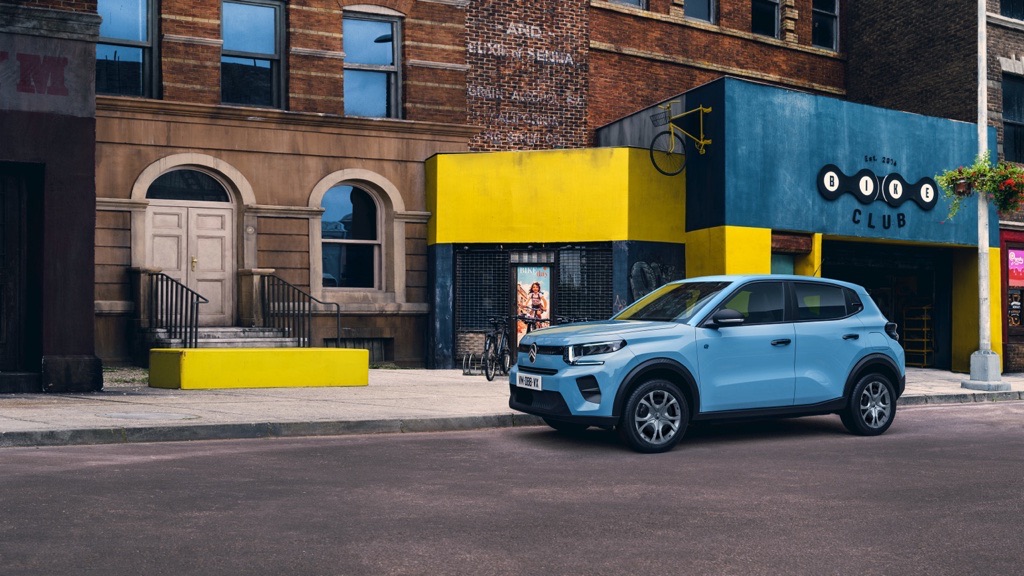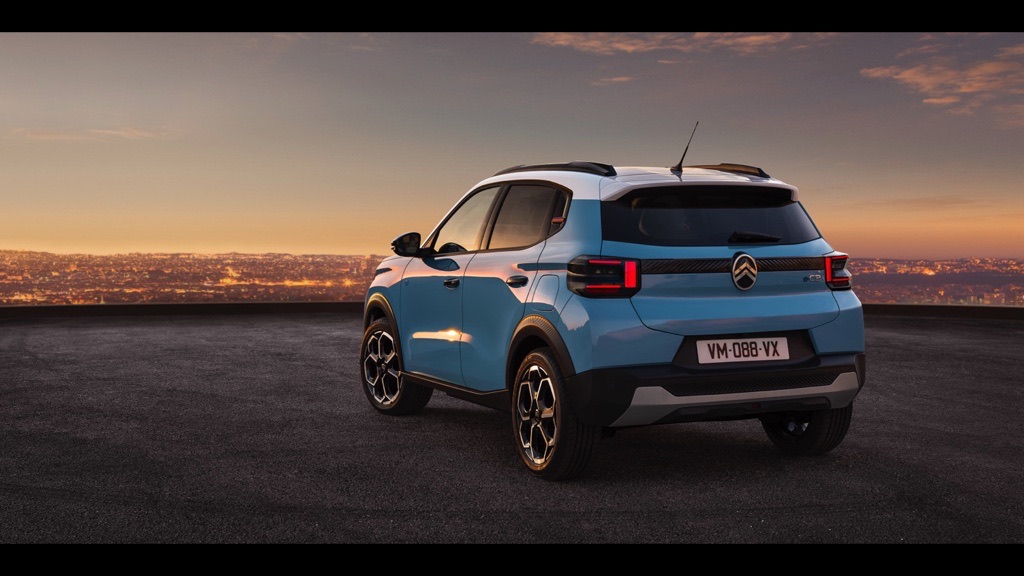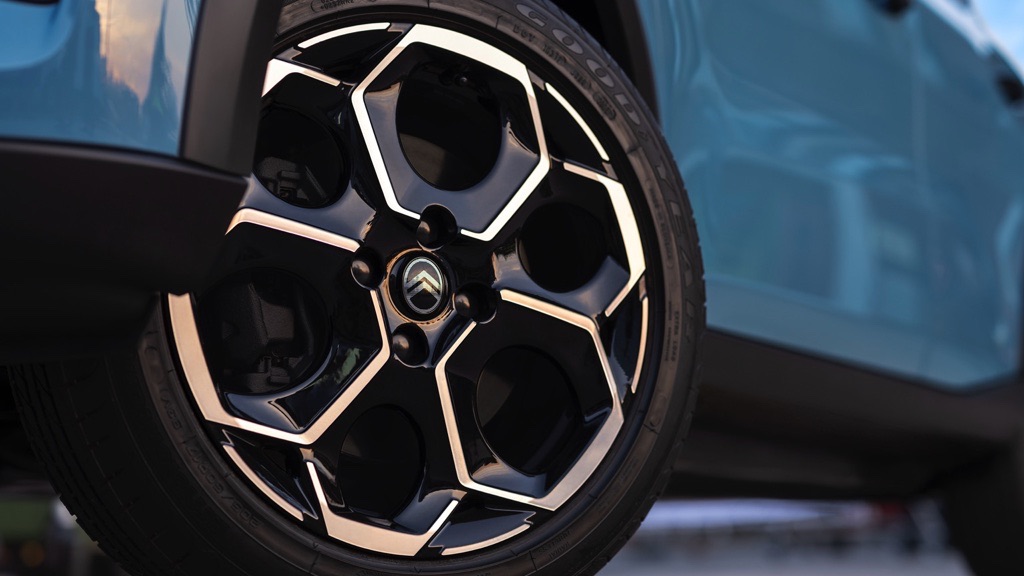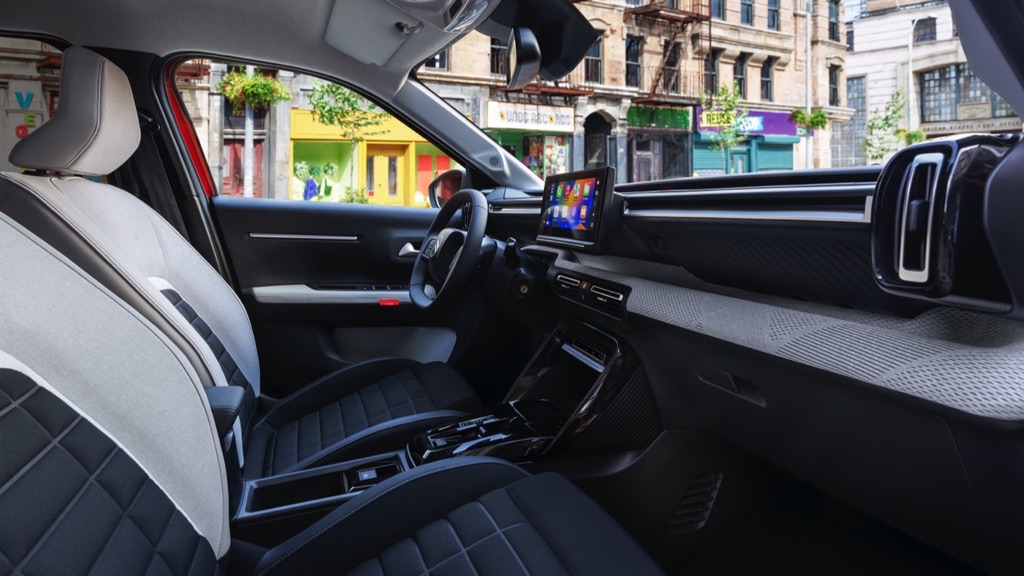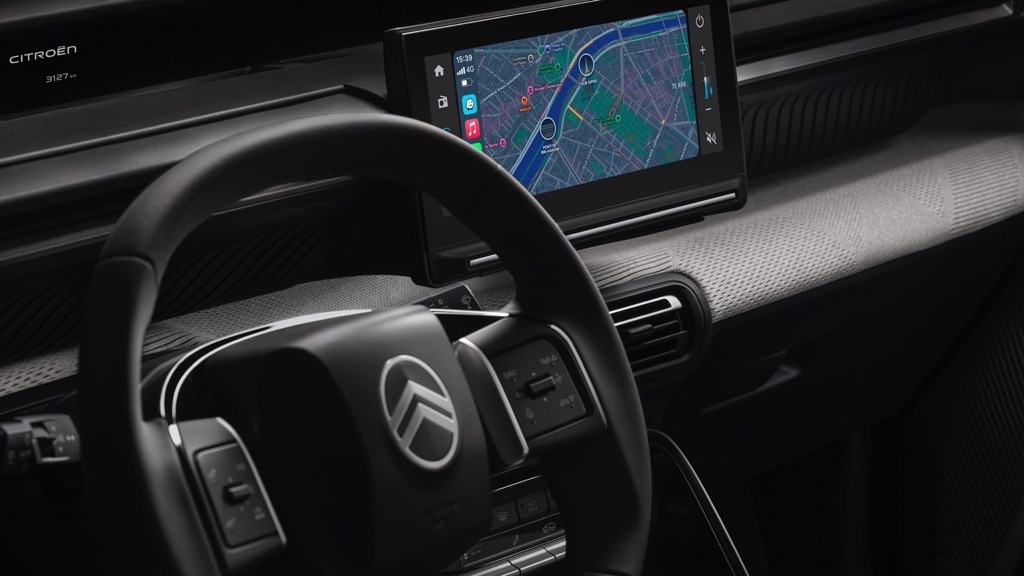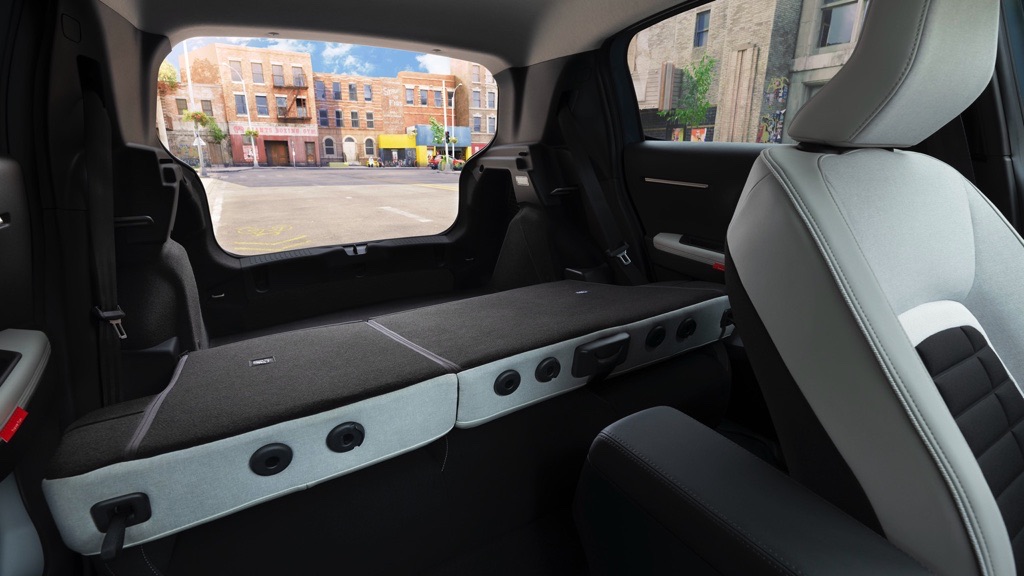The Citroen e-C3 is a remarkable addition to the electric vehicle market, embodying Citroën’s commitment to innovation, style, and sustainability. As a fully electric version of the popular Citroen C3 model, the Citroen e-C3 offers drivers an eco-friendly driving experience without compromising on comfort or performance.
Efficient Electric Powertrain: At the heart of the Citroen e-C3 lies its efficient electric powertrain, delivering impressive performance while producing zero emissions. Powered by a high-capacity battery pack and an electric motor, the Citroen e-C3 delivers smooth acceleration and responsive handling, making it ideal for urban commuting and city driving.
Extended Range and Fast Charging: The Citroen e-C3 is equipped with a long-range battery pack, providing drivers with the freedom to travel farther on a single charge. With advancements in battery technology, the Citroen e-C3 offers an extended range, reducing the need for frequent recharging. Additionally, the Citroene-C3 supports fast charging capabilities, allowing drivers to replenish the battery quickly at public charging stations or using home charging solutions.
Modern Design and Comfortable Interior: Combining style with practicality, the Citroen e-C3 features a modern design and a comfortable interior. With its distinctive Citroën styling cues and aerodynamic silhouette, the Citroen e-C3 stands out on the road. Inside, the cabin offers ample space for passengers and cargo, along with a host of convenience features and amenities to enhance the driving experience.
Intuitive Technology and Connectivity: The Citroen e-C3 comes equipped with advanced technology and connectivity features to keep drivers connected and informed on the road. With a user-friendly infotainment system, smartphone integration, and voice-activated controls, drivers can easily access navigation, music, and other applications while staying focused on driving safely.
Safety and Driver Assistance Systems: Safety is a top priority in the Citroen e-C3, with a suite of driver assistance systems and safety features designed to protect occupants and prevent accidents. From adaptive cruise control and lane-keeping assist to automatic emergency braking and blind-spot monitoring, the Citroen e-C3 offers peace of mind for drivers and passengers alike.
Eco-Friendly Driving Experience: By choosing the Citroen e-C3, drivers can reduce their carbon footprint and contribute to a cleaner, more sustainable future. With zero tailpipe emissions and lower operating costs compared to traditional combustion engine vehicles, the Citroen e-C3 offers an eco-friendly alternative for environmentally conscious drivers.
In conclusion, the Citroen e-C3 represents a compelling option for drivers seeking an electric vehicle that combines style, performance, and sustainability. With its efficient electric powertrain, extended range, modern design, and advanced technology, the Citroen e-C3 delivers a truly exceptional driving experience.
| Performance | |
| Acceleration 0 – 100 km/h | 11.0 sec |
| Top Speed | 135 km/h |
| Electric Range | 265 km |
| Total Power | 83 kW (113 PS) |
| Total Torque | 120 Nm |
| Drive | Front |
| Battery | |
| Nominal Capacity | 45.0 kWh |
| Battery Type | Lithium-ion |
| Number of Cells | No Data |
| Architecture | 400 V |
| Warranty Period | No Data |
| Warranty Mileage | No Data |
| Useable Capacity | 44.0 kWh |
| Cathode Material | LFP |
| Pack Configuration | No Data |
| Nominal Voltage | No Data |
| Form Factor | No Data |
| Name / Reference | No Data |
| Charging | |
| Home / Destination | |
| Charge Port | Type 2 |
| Port Location | Left Side – Rear |
| Charge Power | 7.4 kW AC |
| Charge Time (0->265 km) | 7 hours |
| Charge Speed | 38 km/h |
| Fast Charging | |
| Fastcharge Port | CCS |
| FC Port Location | Left Side – Rear |
| Fastcharge Power (max) | 100 kW DC |
| Fastcharge Power (10-80%) | 60 kW DC |
| Fastcharge Time (26->212 km) | 32 min |
| Fastcharge Speed | 340 km/h |
| Autocharge Supported | Yes |
| Energy Consumption | |
| EVDB Real Range | |
| Range | 265 km |
| Vehicle Consumption | 166 Wh/km |
| CO2 Emissions | 0 g/km |
| Vehicle Fuel Equivalent | 1.9 l/100km |
| WLTP Ratings | |
| Range | 300 km |
| Rated Consumption | 160 Wh/km |
| Vehicle Consumption | 147 Wh/km |
| CO2 Emissions | 0 g/km |
| Rated Fuel Equivalent | 1.8 l/100km |
| Vehicle Fuel Equivalent | 1.6 l/100km |
| Dimensions and Weight | |
| Length | 4015 mm |
| Width | 1755 mm |
| Width with mirrors | 1813 mm |
| Height | 1577 mm |
| Wheelbase | 2540 mm |
| Weight Unladen (EU) | 1419 kg |
| Gross Vehicle Weight (GVWR) | 1910 kg |
| Max. Payload | 566 kg |
| Cargo Volume | 310 L |
| Cargo Volume Max | No Data |
| Cargo Volume Frunk | No Data |
| Roof Load | 61 kg |
| Tow Hitch Possible | Yes |
| Towing Weight Unbraked | 550 kg |
| Towing Weight Braked | 550 kg |
| Vertical Load Max | 61 kg |
| Miscellaneous | |
| Seats | 5 people |
| Isofix | No Data |
| Turning Circle | No Data |
| Platform | STLA SMART CAR |
| EV Dedicated Platform | No |
| Car Body | SUV |
| Segment | JB – Small |
| Roof Rails | No Data |
| Heat pump (HP) | No |
Home And Destination Charging (0 -> 100%)
A public charging station is required to use the highest possible charging rate. The EVSE/charging station’s charging capacity affects how long it takes to fully charge the battery. The table below shows all possible options for fully charging the Citroen e-C3.
In Europe, plugging an electric car into an outlet is often as easy as plugging it into a household outlet, but there are differences from country to country. The table below shows the different ways to charge the Citroen e-C3, but in some countries, some chargers may not be available.
Type 2 (Mennekes – IEC 62196)

| Charging Point | Max. Power | Power | Time | Rate |
| Standard 7.4 kW On-Board Charger | ||||
| Wall Plug (2.3 kW) | 230V / 1x10A | 2.3 kW | 22h30m | 12 km/h |
| 1-phase 16A (3.7 kW) | 230V / 1x16A | 3.7 kW | 14 hours | 19 km/h |
| 1-phase 32A (7.4 kW) | 230V / 1x32A | 7.4 kW | 7 hours | 38 km/h |
| 3-phase 16A (11 kW) | 230V / 1x16A | 3.7 kW | 14 hours | 19 km/h |
| 3-phase 32A (22 kW) | 230V / 1x32A | 7.4 kW | 7 hours | 38 km/h |
| Optional 11.0kW On-Board Charger | ||||
| Wall Plug (2.3 kW) | 230V / 1x10A | 2.3 kW | 22h30m | 12 km/h |
| 1-phase 16A (3.7 kW) | 230V / 1x16A | 3.7 kW | 14 hours | 19 km/h |
| 1-phase 32A (7.4 kW) | 230V / 1x32A | 7.4 kW | 7 hours | 38 km/h |
| 3-phase 16A (11 kW) | 400V / 3x16A | 11 kW | 4h45m | 56 km/h |
| 3-phase 32A (22 kW) | 400V / 3x16A | 11 kW | 4h45m | 56 km/h |
Ast Charging (10 -> 80%)
If you want to enjoy driving an electric car, one of the most important features to consider is the number of miles per hour the car can travel while charged. This is called the “range” of the car. All electric cars have a certain range, even if they are 100% charged. This is because they do not have an internal combustion engine to lean on if you need to drive a long distance.
Max. Power: The maximum power provided by the charging point
Avg. Power: The average power provided by the charging point during a session of 10% to 80%.
Time: the time it takes to charge from 10% to 80%
Speed: the average charging rate during the session of 10% to 80%
Combined Charging System (CCS Combo 2)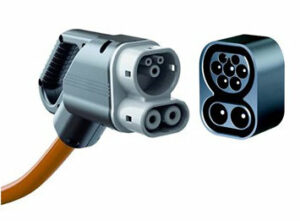
| Charging Point | Max. Power | Avg. Power | Time | Rate |
| CCS (50 kW DC) | 50 kW | 40 kW | 49 min | 220 km/h |
| CCS (100 kW DC) | 100 kW | 60 kW | 32 min | 340 km/h |
| CCS (150 kW DC) | 100 kW | 60 kW | 32 min | 340 km/h |
| Brand | Citroen |
| Model | e-C3 |
| Body Style | SUV |
| Motor power | 83 |
| Maximum Torque, Nm | 120 |
| Battery Energy, kWh | 45.0 |
| Power reserve (NEDC/EPA/WLTP), km | - / - / 265 |
| Level Charging (230/400/DC), hours | 7.0 / 4.45 / 0.32 |
| Electrical Acceleration, 0-100 km/h (0-62.1 mph) in sec | 11 |
| Top Speed, km/h | 135 |


